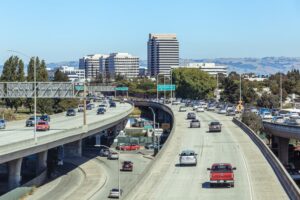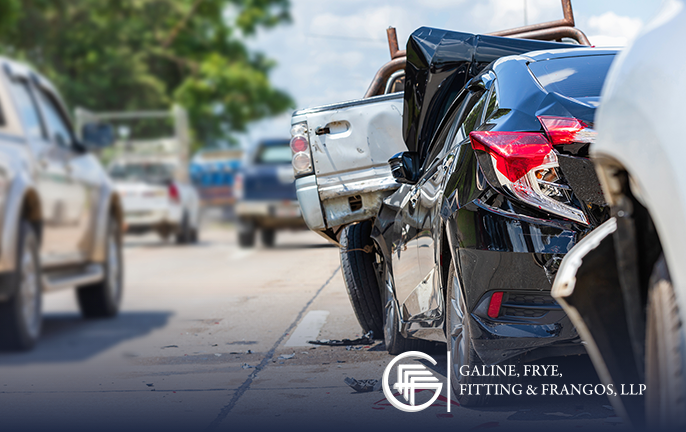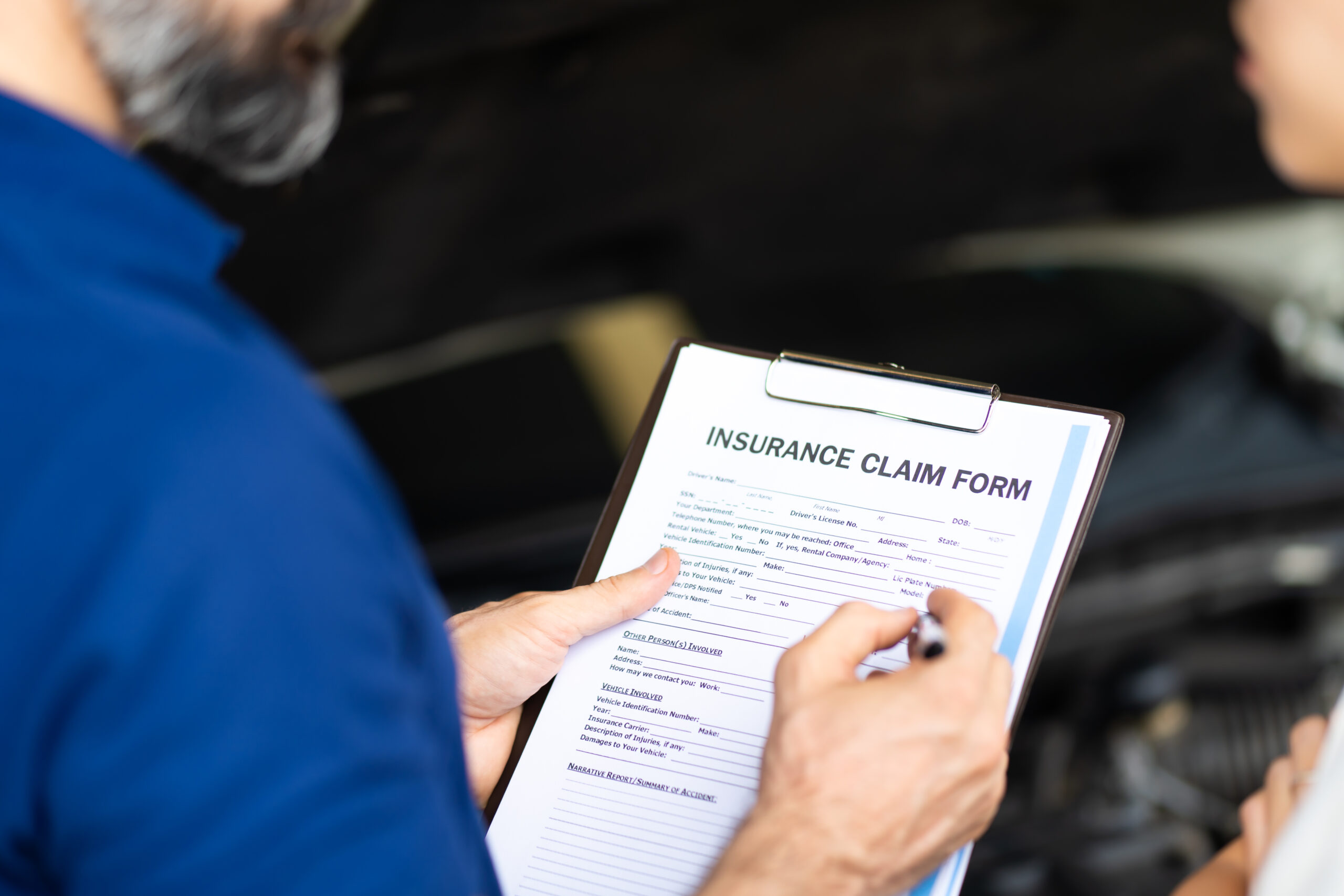Nestled in the heart of the Bay Area, San Mateo offers residents and visitors alike a beautiful blend of scenic landscapes and vibrant communities. However, alongside its charm lies a lesser-known aspect – some of the most dangerous roads in the region.
With a mix of bustling highways, winding routes through mountainous terrain, and densely populated urban streets, San Mateo County presents unique challenges for motorists, motorcyclists, bicyclists, and pedestrians alike.
Many factors contribute to the hazards on these roads, including negligent drivers and poorly designed roads. After an accident in San Mateo, immediately contact an experienced car accident attorney to protect your legal rights and seek compensation.
Factors Contributing to Road Hazards in San Mateo
High Traffic Volume
San Mateo County is home to a large population, and its proximity to Silicon Valley attracts a constant influx of commuters. High traffic volume, especially during peak hours, can increase the likelihood of accidents, particularly on congested roads.
Complex Interchanges
The county boasts several complex interchanges where multiple highways and major roads converge. These intricate interchanges demand utmost caution and awareness from drivers to prevent collisions. While technologically innovative and convenient, they pose serious dangers.
Curves and Slopes
The region's topography presents numerous roads with sharp curves and steep slopes. These challenging terrains require drivers to exercise caution, especially during adverse weather conditions. Motorists must pay careful attention on these roads. Being sleepy or intoxicated can be a recipe for disaster here.
Pedestrian Activity
San Mateo County's urban areas witness significant pedestrian activity. Roads with heavy foot traffic demand a heightened awareness of pedestrian safety to avoid accidents and protect vulnerable road users. While walking keeps transportation costs down and boosts health and the environment, it comes with risks here.
Cyclist-Friendly Roads
The county has embraced cycling culture, resulting in an increase in cyclists on the roads. Motorists must share the roads safely with cyclists, ensuring everyone's well-being. They should always look for cyclists.
Notorious Roads in San Mateo County
The following are some of the most dangerous roads in and around San Mateo:

- Highway 101: As one of the major freeways running through San Mateo County, Highway 101 is infamous for its heavy traffic, tourists, complex interchanges, and frequent accidents.
- Interstate 280: While offering breathtaking views of the Bay Area, I-280 is known for its winding nature and sudden elevation changes, contributing to the risk of accidents.
- El Camino Real: Stretching across the county, this historic road experiences heavy traffic and is particularly dangerous for pedestrians and bicyclists due to its lack of proper crossings and safety measures.
- Highway 92: This scenic route connecting the Peninsula to the East Bay encounters significant traffic, especially on weekends, making it prone to accidents.
- Skyline Boulevard (Highway 35): With its narrow, winding stretches through the Santa Cruz Mountains, Skyline Boulevard poses challenges for both drivers and motorcyclists.
- Tunitas Creek Road: This road is a narrow, twisty road that makes many motorists think they're driving alone and they are often going too fast for the conditions. When someone winds around a corner too quickly, the results can be disastrous.
- Ringwood Avenue and Van Buren Road: This intersection sees fewer accidents, but the accidents that happen here are severe.
- California Drive and Willow Road: Both of these roads see countless accidents each year, usually at intersections where pedestrians and bicyclists need to cross.
When Can You Hold Government Entities Liable?
In some accidents, government entities can have liability. Government entities must create the safest roadways possible, fix roads, address known traffic dangers, and warn of hazards, among other things.
They can take the following actions to help prevent accidents:
- Enhanced infrastructure: Investing in road infrastructure improvements, such as widening lanes, adding shoulders, and improving intersections, can increase road safety and reduce accident risks.
- Adequate signage: Clear and visible road signs, especially in areas with complex interchanges or sharp curves, are crucial in guiding drivers and preventing confusion.
- Traffic calming measures: Implementing traffic calming measures like speed humps and roundabouts can reduce speeding and promote safer driving behaviors.
- Pedestrian and cyclist safety: Building pedestrian-friendly infrastructure, such as crosswalks, sidewalks, and bike lanes, can safeguard vulnerable road users and encourage active transportation.
- Public awareness campaigns: Public awareness campaigns on safe driving practices, pedestrian safety, and sharing the road with cyclists can foster a culture of road safety within the community.
When they don't take these or other actions to help protect California residents and visitors on the roadways, they can be held accountable for the damages they cause.
However, injured parties should keep in mind that claims against the government can be more difficult than other claims as they have different requirements and deadlines. If you think your injury claim may involve government entity negligence, hiring an experienced attorney for help is crucial.
Types of Car Accidents Occurring in San Mateo
Car accidents are unfortunate events that occur all too often on San Mateo roadways. The causes of car accidents can vary, leading to different types of collisions with their own unique set of risks and outcomes.
Rear-End Collisions
Rear-end collisions are one of the most common types of car accidents. They occur when one vehicle strikes the back of another vehicle. These accidents often happen due to tailgating, distracted driving, sudden stops, or adverse weather conditions. Rear-end collisions can result in whiplash injuries and damage to the rear of the vehicles involved.
T-Bone Collisions
Also known as side-impact collisions, T-bone accidents occur when the front end of one vehicle collides with the side of another vehicle, forming a T shape. These accidents typically happen at intersections when one driver fails to yield the right-of-way or runs a red light. T-bone collisions are hazardous because the sides of vehicles offer less protection to passengers.
Head-On Collisions
Head-on collisions happen when two vehicles traveling in opposite directions crash into each other's front ends. These accidents can lead to catastrophic injuries and fatalities due to the high-impact force involved. Head-on collisions can result from wrong-way driving, overtaking on undivided highways, or driver impairment.
Sideswipe Collisions
Sideswipe accidents occur when the sides of two vehicles come into contact while traveling parallel to each other. This type of accident often happens during lane changes or when a driver fails to maintain their lane.
While sideswipe accidents may seem minor, they can lead to loss of vehicle control and potentially cause more significant collisions.
Single-Vehicle Accidents
As the name suggests, single-vehicle accidents involve only one vehicle. These accidents can occur due to various factors, such as driver distraction, speeding, road hazards, and adverse weather conditions.
Single-vehicle accidents involve collisions with fixed objects like trees, poles, or barriers, resulting in severe injuries or fatalities.
Sometimes the actions of another driver can cause single-vehicle crashes. Although a driver may not crash, they can still set off the chain reaction that causes an accident, such as suddenly swerving into another traffic lane.
Rollover Accidents
Rollover accidents happen when a vehicle flips on its side or roof. These accidents are more likely to occur with top-heavy vehicles like SUVs and trucks, especially during sudden maneuvers or collisions at high speeds. Rollover accidents can result in severe injuries to vehicle occupants.
Multi-Vehicle Pileups
Multi-vehicle pileups, or chain-reaction accidents, involve three or more vehicles colliding in a chain reaction. These accidents are common on California roadways and often occur on highways and freeways, usually due to low visibility, inclement weather, or driver inattention. Multi-vehicle pileups can lead to extensive property damage and numerous injuries.
COMMON CAR ACCIDENT INJURIES
Car accident injuries can range in type and severity depending on the types of vehicles involved, the severity of the accident, and many other factors.
Typical car accident injuries include:
- Whiplash: A common injury occurring when the head and neck are suddenly jerked forward and then backward in a rapid motion. Whiplash can lead to neck pain, stiffness, headaches, and sometimes long-term chronic issues.
- Broken bones: The force of a car accident can cause bones to fracture or break. Commonly affected bones include arms, legs, ribs, and collarbones.
- Head injuries: Head injuries range from mild concussions to traumatic brain injuries (TBIs). Even with seat belts and airbags, the impact of a car accident can cause the head to hit the steering wheel, dashboard, or window, leading to various head injuries with varying degrees of seriousness.
- Chest injuries: Chest injuries can occur due to the impact of the seat belt, steering wheel, or airbag during a collision. These injuries may include broken ribs, contusions, or internal injuries to organs such as the lungs or heart.
- Back injuries: Car accidents can cause strain, sprains, and more severe injuries like herniated discs. These injuries can cause ongoing pain and may require ongoing medical treatment.
- Soft tissue injuries: Soft tissue injuries damage muscles, ligaments, and tendons. Such injuries can lead to pain, swelling, and limited range of motion in the affected area.
Common Car Accident Injuries
Car accident injuries can range in type and severity depending on the types of vehicles involved, the severity of the accident, and many other factors.
Typical car accident injuries include:
- Whiplash: A common injury occurring when the head and neck are suddenly jerked forward and then backward in a rapid motion. Whiplash can lead to neck pain, stiffness, headaches, and sometimes long-term chronic issues.
- Broken bones: The force of a car accident can cause bones to fracture or break. Commonly affected bones include arms, legs, ribs, and collarbones.
- Head injuries: Head injuries range from mild concussions to traumatic brain injuries (TBIs). Even with seat belts and airbags, the impact of a car accident can cause the head to hit the steering wheel, dashboard, or window, leading to various head injuries with varying degrees of seriousness.
- Chest injuries: Chest injuries can occur due to the impact of the seat belt, steering wheel, or airbag during a collision. These injuries may include broken ribs, contusions, or internal injuries to organs such as the lungs or heart.
- Back injuries: Car accidents can cause strain, sprains, and more severe injuries like herniated discs. These injuries can cause ongoing pain and may require ongoing medical treatment.
- Soft tissue injuries: Soft tissue injuries damage muscles, ligaments, and tendons. Such injuries can lead to pain, swelling, and limited range of motion in the affected area.
California's Personal Injury Statute of Limitations
In California, the statute of limitations (SOL) sets a specific deadline for an injured individual to file a lawsuit after sustaining an injury due to someone else's negligence or wrongful actions.
Suppose a person fails to file a lawsuit within the specified timeframe. In that case, they may lose their right to seek compensation for their injuries through the court system. The statute of limitations for personal injury cases in California is outlined in the California Code of Civil Procedure and varies depending on the type of claim.
For most general personal injury claims, including car accidents, pedestrian and cyclist accidents, and other types of negligence-based injuries, the statute of limitations in California is two years from the injury. This means that the injured party has two years from the date of the accident or injury to file a lawsuit seeking compensation.
For wrongful death claims, where a person's death is caused by another party's negligence or intentional actions, the statute of limitations is two years from the date of the person's death. Also note that this deadline is separate from any criminal charges in connection with the death.
Special rules apply when filing a personal injury claim against a government entity, such as a city or county. The injured party must file a government tort claim within six months from the date of the injury before proceeding with a lawsuit.
If the government entity denies the claim, the injured person then has six months from the date of the denial to file a lawsuit.
For individuals who were minors at the time of the injury, the statute of limitations is generally tolled or paused until they reach 18. On their 18th birthday, they have two years to file a personal injury lawsuit.
Always be aware of the statute of limitations for your specific case. Failing to file a lawsuit within the legal time limit can result in the forfeiture of your right to seek compensation for your injuries.
To protect your rights and ensure the best chance of a fair financial recovery, consult an experienced attorney as soon as possible after the injury occurs. A lawyer can navigate the legal process, assess the merits of your claim, and ensure they file your lawsuit within the appropriate statute of limitations.
Did You Suffer Injuries in an Accident on San Mateo Roads? Contact an Experienced Car Accident Attorney Today

While San Mateo County offers many attractions and thriving communities, it also harbors some of the most dangerous roads in the Bay Area. The blend of high traffic volumes, complex interchanges, challenging terrains, and bustling urban streets demands an unwavering commitment to road safety.
If you or a family member were involved in an injury accident on one of these roads, don't wait to contact an experienced San Mateo personal injury attorney. Start exercising your legal rights to pursue compensation as soon as possible.

